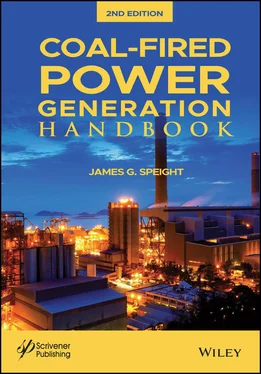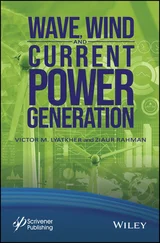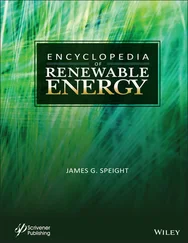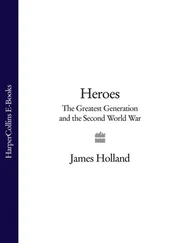Installation of environmental control systems will add internal energy requirements, reducing the efficiency of the plant. There are some changes that can be employed to make an existing unit more efficient. However, these changes typically will only result in an improvement to efficiency of a percentage point or so. In order to produce higher efficiency ratings, higher pressure and temperatures are required. This increases the cost of the plant as special alloy materials will be needed. Technology improvements can assist by lowering the cost of these special materials through discovery and better manufacturing process.
Electricity generation in a coal-fired power station requires combustion of the coal, after which the energy released during the combustion is used to generate steam which is then used to drive the turbine generators that produce electricity. The power station can be conveniently divided in four separate but, in reality, integrated operations: (i) the combustor or firebox, (ii), the boiler, (iii) the turbine generator, and (iv) the condenser.
Before the coal is burned in the combustor , it is pulverized (often to an extremely small size that has been stated to have the appearance of a black talcum powder) after which the coal is mixed with hot air and blown into the combustor. The coal is burned in suspension and provides the most complete combustion and maximum heat possible.
In the boiler , purified water is pumped through pipes inside the boiler which converts the water to steam. At temperatures up to 540°C (1000°F) and under pressures up to 3500 psi, the steam is piped to the turbine where it contacts a series of turbine blades and turns the turbine shaft. The turbine shaft is connected to the shaft of the generator, where magnets spin within wire coils to produce electricity. The steam is then drawn into a condenser which condenses the steam back into water so that it can be used over and over again in the plant. Millions of gallons of cooling water are pumped through a network of tubes that runs through the condenser and after the steam is condensed, it is pumped to the boiler again to repeat the cycle.
Coal quality is the term used to refer to the properties and characteristics of coal that influence its behavior and use. Coal quality has an impact on many parts of a power plant including the coal handling facilities, pulverizing mills, boiler, air heater, electrostatic precipitator, ash disposal as well as stack emissions. Because coals have different characteristics and heat content, the behavior of a coal in a boiler is strongly influenced by the rank of the coal as well as and by the content (and type) of the mineral matter and other impurities associated with it. Coal properties can affect the efficiency, reliability, and availability of both the boiler and the emissions control units, and therefore, the properties affect the economics as well as the short- and long-term operation of the plant.
Among the coal-quality characteristics that are important for coal-fired power plants are the concentrations, distribution, and forms of the many elements contained in the coal feedstock. Knowledge of these quality characteristics in coal deposits may allow us to use this essential energy resource more efficiently and effectively and with less undesirable environmental impact.
In fact, the performance of power plants and the costs of power generation are influenced by many coal properties. Specifically, coal quality impacts not only coal cost but also net power output as well as capital and operating and maintenance costs and waste disposal costs. In fact, coal quality impacts the coal chain in a power plant and their relationship to power generation costs.
Thus, an essential part of power plant development is the rigorous analysis of information which should be internally consistent and verifiable, such as coal quality, coal consumption and electricity output. It is, therefore, necessary to understand operating information for units at coal-fired power plants not only for the purposes of determining, monitoring, reporting, comparing, and projecting coal-fired power plant efficiencies but also for monitoring carbon dioxide emissions (as well as the emission of other noxious gases and particulate matter).
Thus, to develop combustion technology for efficient production of electricity, the influences of the coal properties, such as the (i) the elemental composition of the coal, (ii) rank of the coal, the mineral matter content of the coal, (iii) the size of the pulverized coal particles, and (iv) the tendency of the combustion system to produce fly ash and bottom slag are all of considerable importance and need to be addressed in assessing the potential performance of a coal-fired electricity generating plant.
Briefly, the degree of alteration (or metamorphism) that occurs as a coal matures from peat to anthracite is referred to as the rank of the coal ( Table 1.1). Low-coal includes lignite and sub-bituminous coal which have a lower energy content (because of the low carbon content) and relatively high moisture content. High-rank coals, including bituminous and anthracite coals, contain more carbon than lower-rank coals which results in a much higher energy content. The high-rank coals also have a more vitreous (shiny) appearance and lower moisture content then lower-rank coals.
Table 1.1 Coal ranks *.
| Rank |
Description |
| Lignite |
The largest portion of the coal reserves of the world. A soft, brownish-black coal which is the lowest level of the coal family. The texture of the original wood can even be seen in some pieces primarily found west of the Mississippi River. |
| Subbituminous coal |
A dull black coal which, when burned, releases more energy (heat) than lignite when burned; mined mostly in Montana, Wyoming, and a few other western states. |
| Bituminous coal |
Sometimes called soft coal ; found primarily east of the Mississippi River in midwestern states such as Ohio and Illinois and in the Appalachian mountain range from Kentucky to Pennsylvania. |
| Anthracite |
The hardest coal and gives off the greatest amount of heat when burned; the reserves of anthracite in the United States are located primarily in Pennsylvania. |
*As mined in the United States.
However, before turning to a fuller description of coal properties and power generation ( Chapters 5, 6, 11), it is necessary to understand the occurrence of coal and whether or not present estimates are sufficient to produce the electric power necessary for the next several decades.
Production of steel accounts for the second-largest use of coal. Minor uses include cement manufacture, the pulp and paper industry, and production of a wide range of other products (such as coal tar and coal chemicals). The steel industry uses coal by first heating it and converting it into coke, a hard substance consisting of nearly pure carbon (Speight, 2013). The coke is combined with iron ore and limestone, and then the mixture is heated to produce iron. Other industries use different coal gases emitted during the coke-forming process to make fertilizers, solvents, pharmaceuticals, pesticides, and other products.
Finally, in order to generate electric power using the maximum energy in coal, all aspects of a coal need to be understood, including (i) handling and storage characteristics, (ii) pulverizing behavior, (iii) combustion behavior, (iv) mineral matter and ash chemistry interactions in addition to the characteristics of the coal and its ash in terms of environmental factors such as dust, self-heating and emissions components. In order to ensure that quality is controlled, the coal chain must be regularly sampled and adjusted in accordance with the analytical results ( Chapters 5, 6). Key control parameters, which when monitored, can provide a reliable indication of quality in terms of both specification and consistency requirements.
Читать дальше












